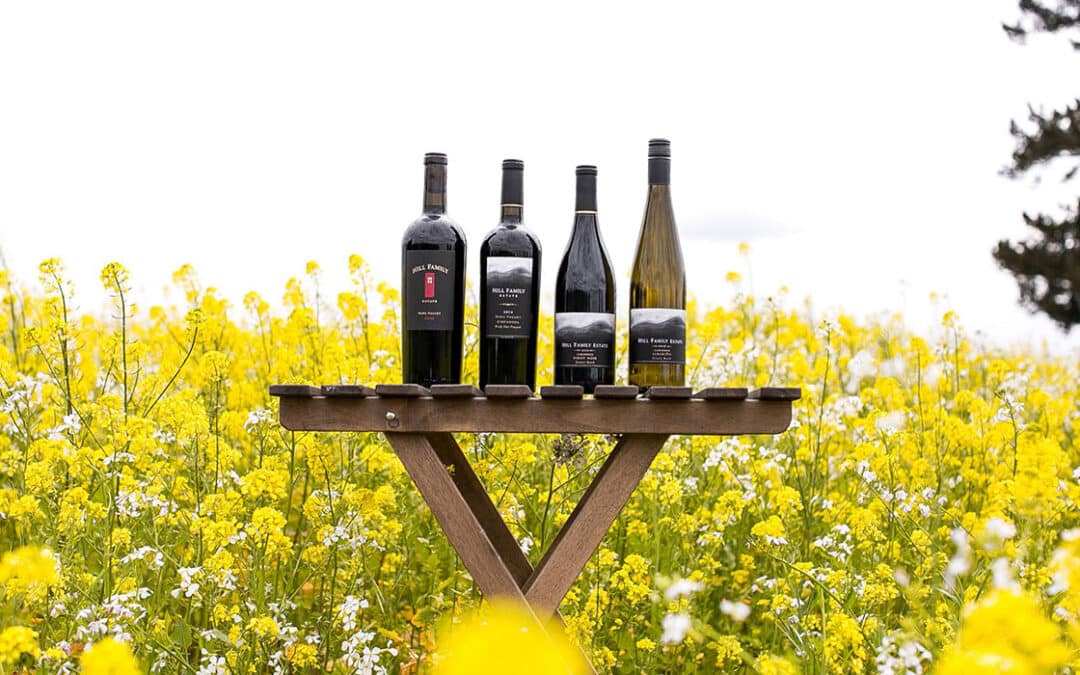While our harvest season, from August to October, tends to be what many of our visitors think of as the most picturesque season to visit the Napa Valley, the late winter mustard season must be a close second. With blankets of bright yellow flowers among the vineyards, many a club member takes advantage of the smaller crowds and stunning vistas to use the benefits of their wine membership on a February visit. Yountville wine tasting in mustard fields is a favorite experience during this time, offering a perfect blend of scenic beauty and exquisite wines. There are even calendars and festivals celebrating the mustard flower.
Wild mustard, known botanically as Rhamphospermum arvense (other older synonyms are Brasssica arvensis and Sinapis arvensis) and commonly as charlock or field mustard (the “arvense” part of the scientific name means “of the field”) is a brassica native to the Mediterranean basin. From its original homeland it spread naturally across Europe and into Asia and Africa. Sometime in the 1700’s it was introduced to California, where it has spread prodigiously. Because wild mustard seeds germinate within three days of rainfall, and because the plants produce chemicals in the soil that inhibit other plants, wild mustard outcompetes native plants. As it can grow to four feet in a season, then die and dry out, it is a potential fire hazard that can spread wildfire from one area to another. For this reason, wildlife management authorities struggle to remove it from wild areas. The larvae of the small white cabbage butterfly, Pieris rapae, feed on the wild mustard, but not in enough quantity to keep it in check.
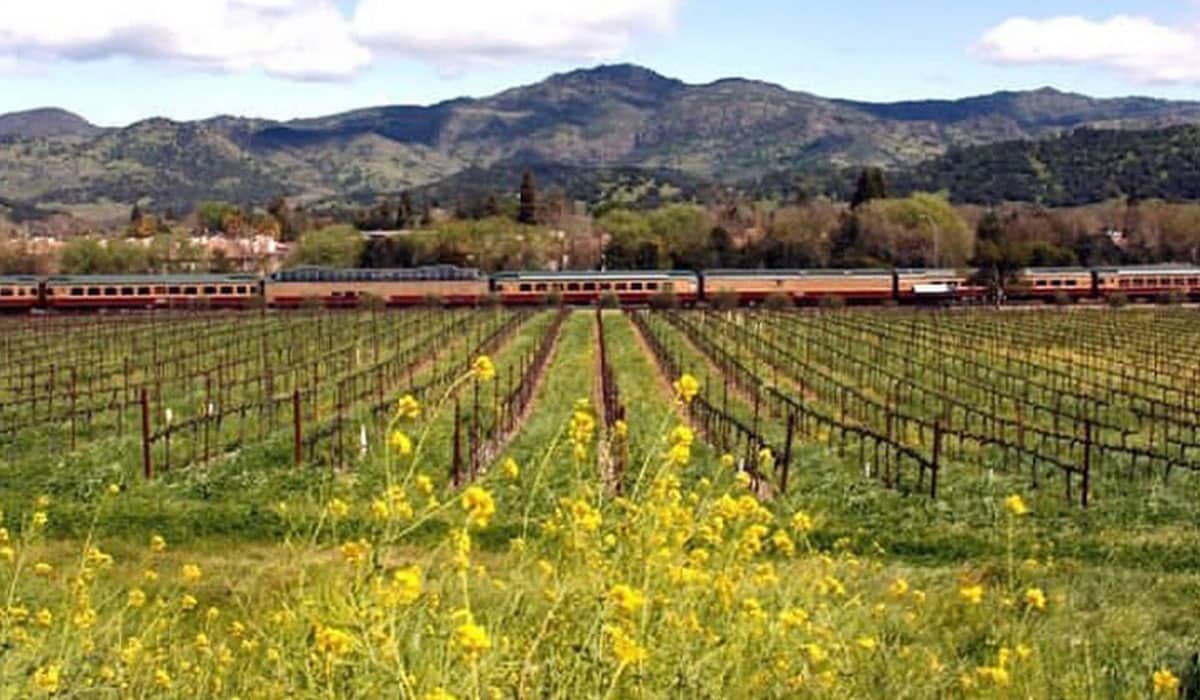

Since ancient times, the people of Eurasia and Africa have domesticated forms of wild mustards to create many useful vegetables.
As a result, it is closely related to many common vegetables, including cabbage, broccoli, Brussels sprouts, kale, cauliflower, turnips, arugula, bok choi, horseradish, watercress, and collards. Many of the cultivated forms of mustard are actually one species, Brassica oleracea. Vegetables of this species, from cauliflower to kohlrabi are actually cultivars (breeds) of the same species, similar to how our wine grapes, whether they be crisp albariño or deep petit verdot grapes are simply different cultivars of Vitus vinifera. These brassicas, also called cruciferous vegetables, are highly touted for their health benefits.
Although wild mustard is invasive throughout California, the plant offers several benefits to winegrowers, as it holds down soil during the rainy season, harbors root microbes that fix nitrogen into a form crucial for new growth in the vines, and fights nematodes, tiny worm-like organisms that can harm grape vines. When young, its leaves are edible (usually boiled), although as they age, they become progressively spicier and harder to digest.
Like many of its domesticated cousins, wild mustard contains the chemicals that form Allyl isothiocyanate (3-Isothiocyanatoprop-1-ene), the piquant substance that gives horseradish and spicy mustard their kick. These compounds are also the ones that help build soil resistance to nematodes. The environmental benefit to this effect of mustard growth is the reduced use of pesticides and sprays, preventing toxic build-up and runoff into our streams and rivers.
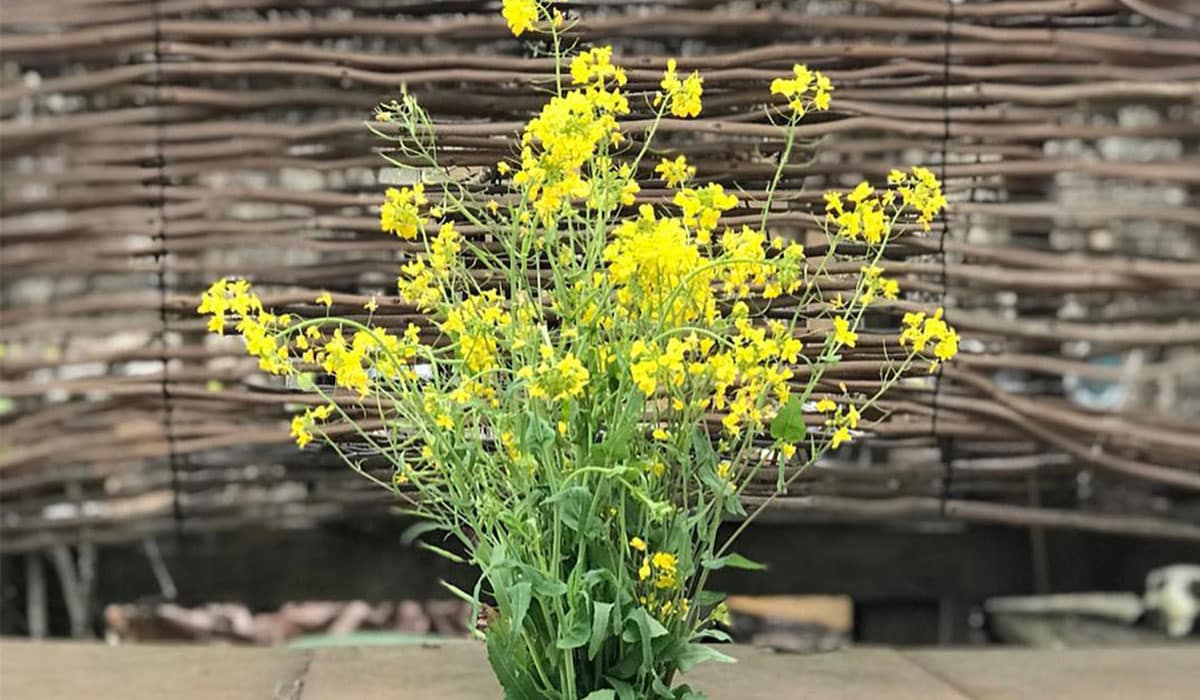
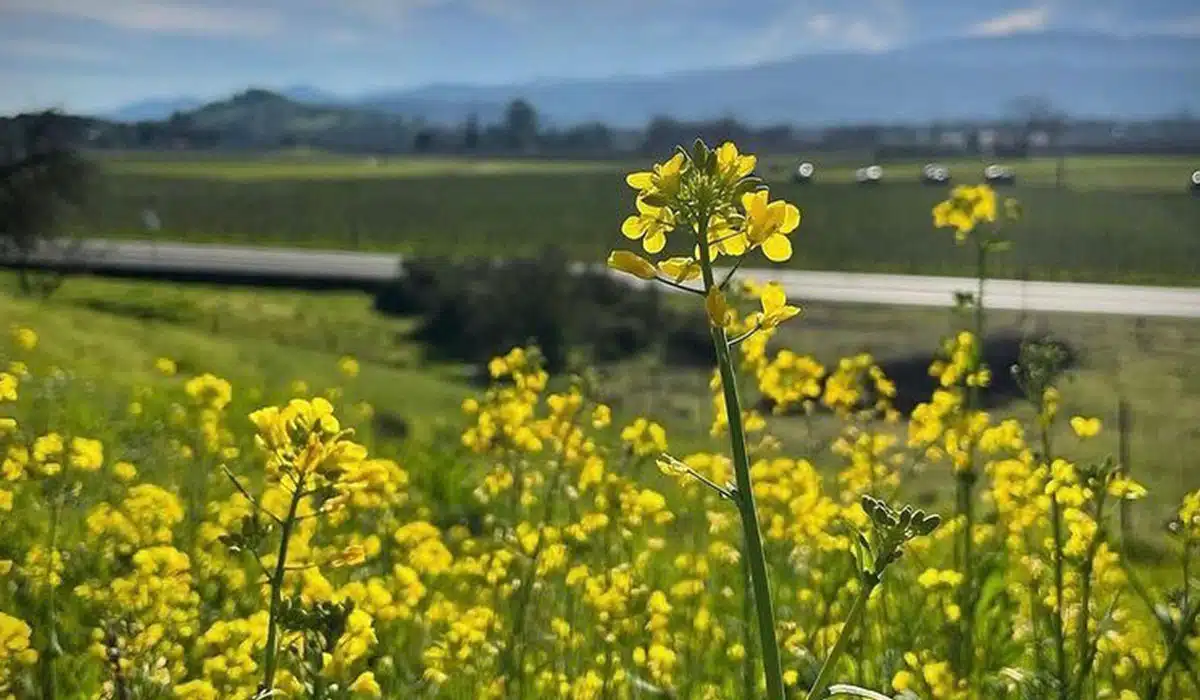
These isothiocyanates are used in Italy to make mostarda, a combination of candied fruit and mustard oil that is often paired with pork or duck. Italian mostarda might be an acquired taste, as the combination of sweet and strong piquancy is not for everyone! A traditional Italian New Year’s feast involves a long cooked cotechino and lentils, topped with spicy mostarda.
The intense yellow of the mustard flowers can be made into a brilliant fabric dye. Looking for a way to use mustard cleared from wild lands, Older Brother, a company in Southern California brewed a tea from thousands of wild mustard plants to extract the color for the clothing they make. This creative reuse of the wild mustard prevents it from drying out in the wilderness and becoming a fire vector or from clogging municipal compost lots. Older Brother suggests wearing their rugged, mustard-dyed clothing for gardening and while removing invasive plant species!
Like its domesticated cousins, wild mustard seed can be made into the condiment mustard.
Many local food foragers will do just this, as well as judiciously using the spicy greens for cooking. Foraging wild ingredients like our local mustard is a great way to eat close to the land, connecting our table to the seasons and to the terroir, but always make sure that you have the permission of the landowner when foraging!
Wild mustard is related to Sinapis alba, the white mustard, from which the famous condiment is made. One of the most desired mustards, moutarde de dijon, is made with ground mustard seed, a few other spices, vinegar, salt and white wine. Touted as the preferred condiment of the refined and sophisticated (see the classic television commercial for Grey Poupon Dijon Mustard below) the wine drinker must be aware of its potential to interfere with the enjoyment of wine, particularly red wine.
As the noted wine writer Alexis Lichine wrote in his wines of France;
“Dijon used to be famous for its food, but today it is known principally as the world’s mustard center, and mustard is a condiment that spoils the taste of great wine.”
– Lichine, Alexis. Wines of France. 1972 edition, Alfred A. Knopf, Inc. New York
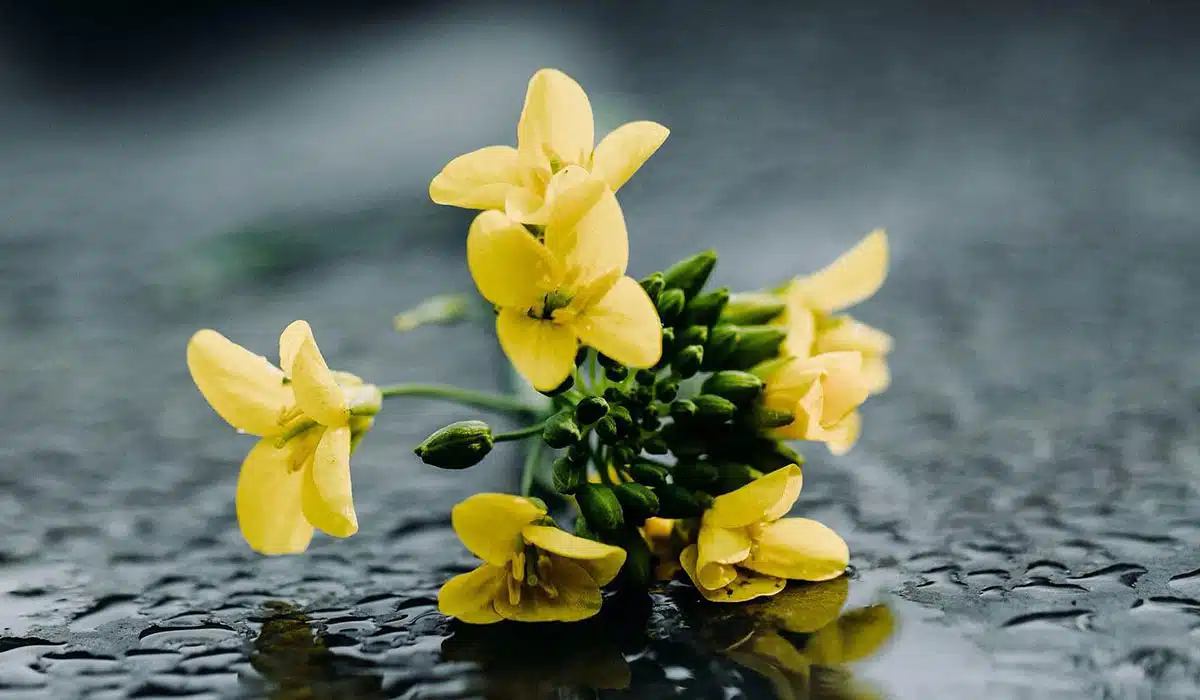

The problem with mustard and, indeed, all of the brassicas, is the presence of sulfur compounds that interfere with the aromas of wine.
The bitterness intrinsic to many of the brassicas can also cause problems with wine. Accordingly, most wineries that have food programs have a strict “no broccoli” policy in their kitchens (with a dim view being given to Brussels sprouts, asparagus, cauliflower, and kale).
However, these complications with mustards and wine do not necessarily imply the need for a total avoidance of mustard. A rack of lamb, lightly brushed with dijon mustard, fresh herbs, breadcrumbs and garlic can be paired beautifully with wine (for instance the Hill Family Estate Syrah).
As seen on the recent Hill Family Estate Instagram post about pairing our Russian River Sparkling Rosé with a beef hotdog (loaded with sauerkraut and classic American mustard), some wine and mustard combinations can be heavenly. We also love our Cuveé Charlotte with a salmon filet cooked with mustard and tarragon and topped with finely chopped chives. And a dollop of dijon mustard in a vinaigrette makes a lovely dressing for a refreshing salad paired with the Hill Family Estate Napa Valley Sauvignon Blanc. Yountville wine tasting in mustard fields is another delightful way to experience the fusion of mustard’s bold flavors with exceptional wines. At the end of this blog post is our favorite mustard-based recipe.
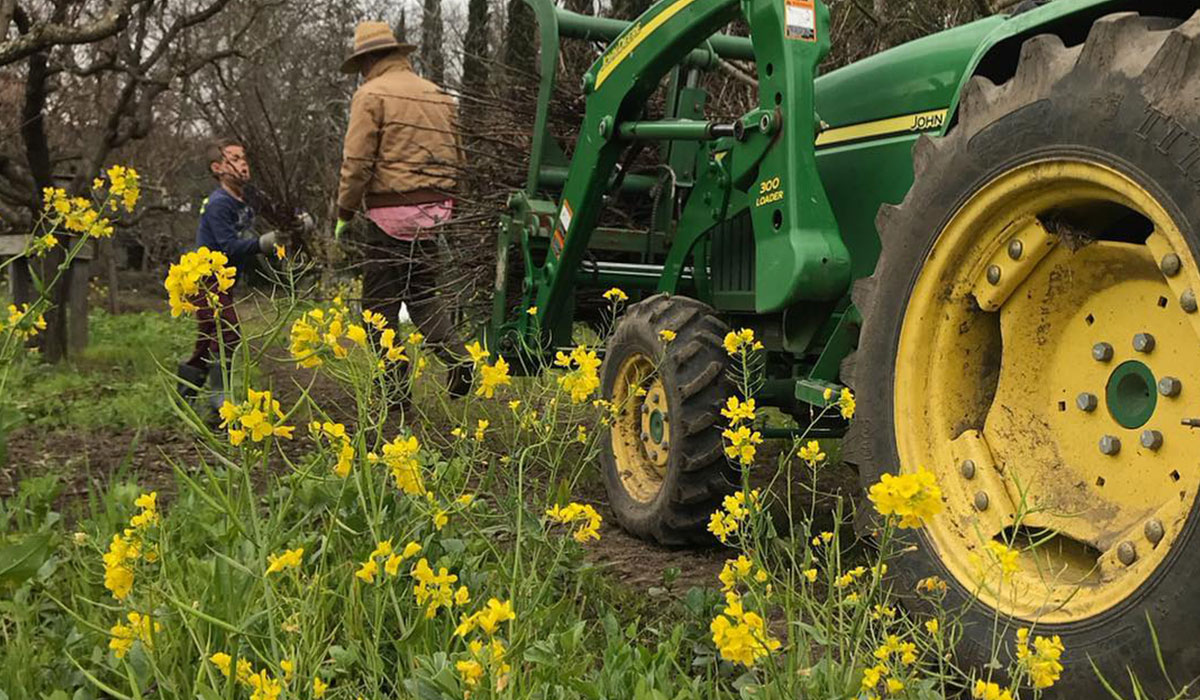
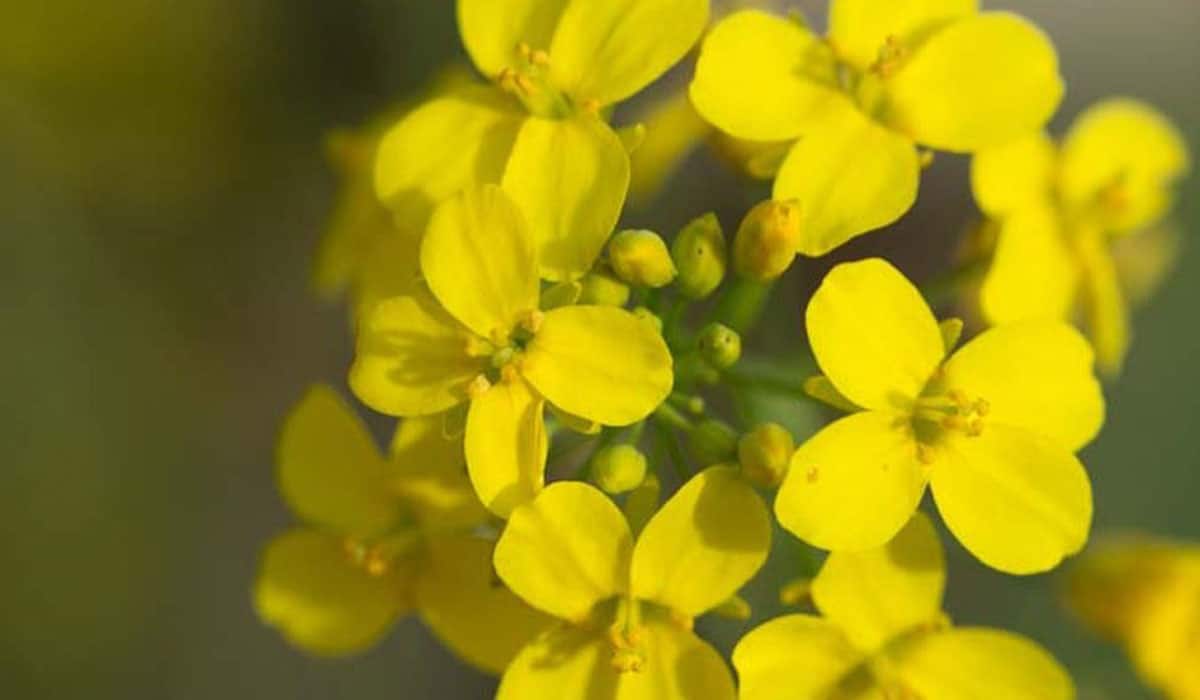
In recent years some long-distance runners have taken to slurping packets of mustard (or taking slugs of briny pickle juice) as an electrolyte replenisher and anti-cramp preventative. With very small amounts of salt and virtually no caloric content, there is probably no harm to using mustard this way, but there is far from scientific consensus to the efficacy of this use. Clinical studies have ruled out the possibility of harm from consuming reasonable amounts of mustard in this way, but they have also shown little evidence of benefit.
If a visitor is looking for places to take in the splendor of the wild mustard blooming in the Napa Valley, the good news is that one does not need to look very hard. Spectacular stands of mustard are found right next to Highway 29. The higher elevation sections of the Silverado Trail offer stunning vistas of vibrant vineyards, illuminated by the glow of the blooming mustard flowers.
However, wild mustard is not the only flower to view in the Napa Valley.
Coming shortly on the heels of the mustard bloom are the orange calendula flowers and the equally spectacular California poppy. Both of these are found with astounding frequency throughout the Napa Valley, although the showiest stands of poppies are found above Lake Hennessey in the Vaca Mountains on the eastern side of the valley, with Moore Creek Park being a favorite location for poppy viewing. Some of the hillsides on the road to Lake Berryessa become a carpet of orange when the poppies are in view. Unlike the wild mustard, California poppies are native to California (and are, in fact, the state flower of California).
Finally, we present you with one of our favorite mustard-based recipes.
Chicken Thighs in a Garlicky Cumin-infused
Honey Dijon and Soy Sauce.
Ingredients:
- 2-3 lbs chicken thighs (boneless and skinless are fine, although bone-in/skin-on thighs will have more flavor
- ½ cup honey
- ½ cup dijon mustard
- 3 Tablespoons soy sauce
- 2 teaspoons ground cumin
- 2 garlic cloves, minced
Directions:
Warm the honey with the dijon mustard, soy sauce, garlic, and cumin in a small saucepan, until it is a smooth, easily flowing liquid.
Place chicken thighs in a shallow oven-safe pan and pour the sauce over them.
Place the pan in the refrigerator and let marinate for 4-5 hours.
Place the pan in a preheated 350-degree oven for 50-60 minutes, turning once or twice. The thighs are done when the juices from the meat run clear (test with the point of a sharp knife). Serve over rice, with Hill Family Estate Tiara sauvignon blanc.

